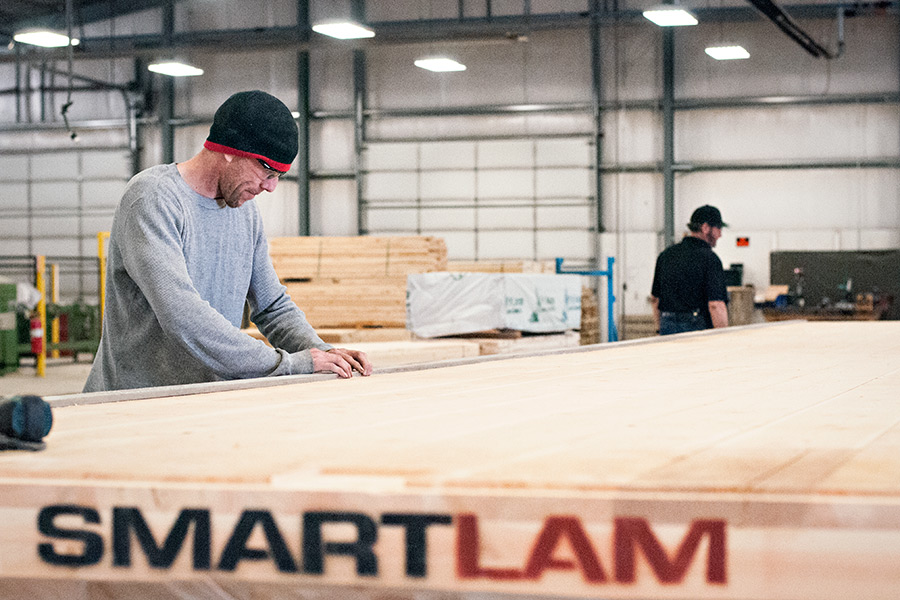High-rise wood-framed buildings are a rarity in the United States, but that may change with the help of a bipartisan bill that calls for accelerating research and development of tall wood buildings.
U.S. Sens. Steve Daines, a Republican, and Jon Tester, a Democrat, have introduced legislation they say would support Montana’s timber industry, create jobs and boost research to find innovative ways to use wood in the construction of buildings above 85 feet in height, or roughly seven or more stories.
Called the Timber Innovation Act, the legislation could be a “game changer” for the timber industry, according to Julia Altemus, executive director of the Montana Wood Products Association.
“Supporting the expansion of mass timber in commercial buildings creates jobs, while growing a market for timber products,” she said. “It provides an incentive for private forest owners to keep their timberlands in private ownership and for timber resource managers to sustainably manage their resources.”
Until recently, most wood buildings haven’t exceeded six stories. But according to the American Wood Council, 17 buildings of between seven and 14 stories have been built globally in the last half-decade. That’s possible thanks to a new generation of engineered wood products.
Advocates says the buildings are safe and more environmentally friendly than their steel and concrete counterparts.
Casey Malmquist is president and general manager of the Columbia Falls-based SmartLam Technologies Group, the nation’s first commercial manufacturer of cross-laminated timber (CLT) products. As CLT use continues to grow across the country, Malmquist said his company is poised to benefit from a law that promotes the use of his product.
“It certainly supports what we are doing, which is mass timber,” Malmquist said. “It could be very beneficial for the cross-laminated timber industry.”
American Wood Council President and CEO Robert Glowinski said the legislation is an opportunity to bring new, sustainable mass timber technology to the nation’s construction industry.
“Building construction using wood and mass timber products directly supports jobs in areas of rural America that have yet to recover from the recession and would lessen our dependence on fossil fuel-intensive alternatives, so having the federal government encourage further development of this emerging construction technology stands to benefit and enhance both infrastructure development and putting people to work,” he said.
The bill would also incentivize investment through the National Forest Products Lab and American colleges and universities to conduct research and development on new methods for the construction of wood buildings.
Additionally, the Timber Innovation Act would support ongoing efforts at the U.S. Department of Agriculture to further support the use of wood products as a building material for tall buildings.
“In Montana we have an abundance of trees, and through innovative technology we can create new uses and applications for Montana’s natural resources,” Daines stated. “By incentivizing the use of wood in building materials, we can create more good-paying jobs.”
Added Tester: “Montana’s forests help drive our state’s economy. This bipartisan legislation will make responsible investments in new technology, create good-paying jobs, and boost our wood products and construction industries.”
Building 85-foot high commercial structures with cross-laminated timber and associated products sequesters more carbon for decades to come, Altemus said.
“Once enacted, this bill will pave the way for new performance-driven research and will likely be a real game changer for the timber industry,” she said.
Kristen Sawin, vice president of government affairs, environment and safety at Weyerhaeuser, said mass timber is an innovative technology that can contribute to the sustained health and revitalization of rural communities that rely on the forest economy.
“Montana is home to many such communities and we are excited by the new opportunities that promoting tall wood buildings can provide,” she said.
